Horns 1 fist
 | 1 4 and 5 step out to screen for 1. 1 drives off the screen by 4, who rolls to the basket. 5 moves out top (or rolls to the basket if 4 pops out top). See Using midscreens for adjustments based on reading how the ballscreen is defended, e.g., switch, trap, show, etc. Against teams that defend strong on the ballscreen, Wake Forest has 1 sell the ballscreen then pass to 5 stepping out, 4 cuts to the basket (Lobo). Variation - as 1 gets to 4's screen he passes up the middle to 3 cutting to the basket (76ers). |
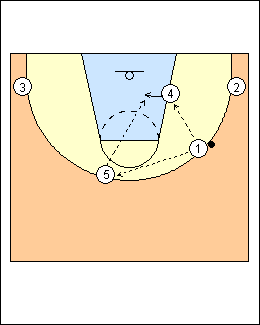 | 2 Low-post isolation - If the pick and roll does not produce a good shot, 1 looks to feed 4 in the low-post area (spacing). 1 then passes to 5, who also looks inside as 4 turns and seals his defender. 5 cuts backdoor if overplayed, 3 ball cuts to exchange positions, and 4 drops to basket level (e.g., the short corner). Otherwise 2 and 3 stay low and wide for spacing. Variation - if 1's dribble is still alive, 5 ballscreens (see Horns 1 double fist). |
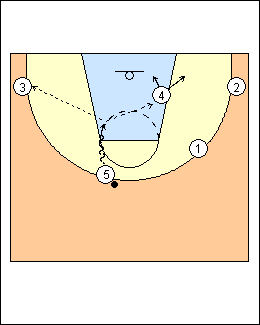 | 3 High-post isolation - 5 can penetrate, and pitch if defensive help arrives. 4 drops to basket level on penetration. |
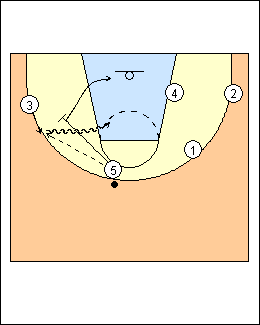 | 4 If 5 passes to 3 (who comes up towards the ball), 5 ballscreens. 3 cuts backdoor if overplayed. Variations - 4 backscreens for 5 (Boston) - 4 screens for 2 who backscreens for 5 (see the Argentina 2003 offence, play 4) - 1 screens away for 2 then spots up. |
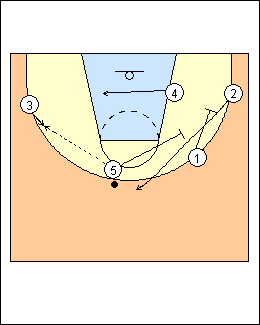 | 5 Or 5 initiates a staggered screen with 1 for 2 (Horns 1 Rhondorf), e.g., to avoid a ballscreen involving a left-hand dribble. 4 flashes across the lane, and 3 can call for a ballscreen. Variations - 2 backscreens for 5 (Horns 1 Kansas), or 5 downscreens for 2 (Wake Forest). |
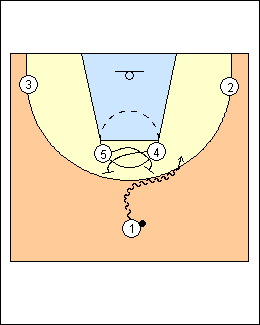 | 6 Entry option - 4 and 5 split cut to exchange positions. |
This page was made with Basketball playbook from Jes-Soft